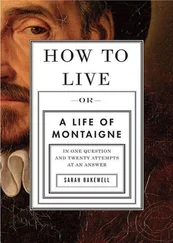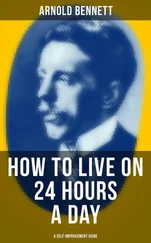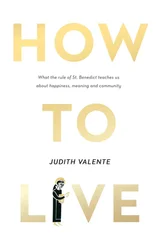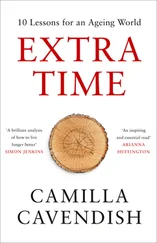The distinction is worth contemplating on more levels than one. The lesson to be considered here has as much to do with spiritual awareness as it does with architecture. It has something to tell us about the way we all view time.
Time is a continuum of empty ages filled only by the substance we bring to it ourselves. The temptation of every age is to discount the old, to worship at the shrine of the new. But the value of time lies as much in what we ourselves bring to the understanding of time as it does in what time brings to us. It is our awareness and interpretations of time that determine our own place in the development of the human spirit, of the spiritual impact of yesterday on tomorrow.
The deep down spiritual truth is that time is always and forever an invitation to growth. Whether the wisdom of the ages shapes us, or not, determines the nature of our civilization, the depth of our culture, the spiritual filter through which we ourselves, in our own time, mold the character of the world around us. If, as individuals, we understand time as the storehouse of our souls, explore it for answers to perennial questions, and test it for its value, then we stand to become the bearers of the wisdom of the ages. If not, we simply join the ranks of societies before us that walked through life untouched by time. We become one more excursion through epochs we failed to fathom, and so end devoid of the substance they were meant to bring us.
And yet, if we make the effort to trace the chain of life and thought and ideals that have brought us as a people from one moment in history to another, we make ourselves part of the passage to a healthy tomorrow. We are prepared, then, to go in our own times—where there is no road—and leave a path.
This book helps us see what we are losing; to make us taste what we’re in danger of dismissing as unimportant. It reminds us of what we’ve missed but is still at hand, waiting to enliven the age in which we live as well as to be remembered for its contribution to the past.
This book, written in a period of political turmoil and personal angst, of national division and individual uncertainty, recalls us to the best of ourselves. It details for us the basis of good society. It brings us beyond the roiling headlines of the day to a consciousness of the little things that make for human community, healthy families, moral maturity, and personal peace and happiness.
But to do that, it takes us back to the thinking of the 6th century. It translates a moment of social upheaval for us and identifies a point of spiritual eruption, the impact of which still marks the world. Most importantly of all, it asks whether or not the ideas that lifted eras before us out of darkness might be exactly what we need now to restore our own best selves in the here and now.
The document this book expounds as a guide for modern living is Benedict of Nusia’s Rule for monastics. Written in the 6th century, it is still one of the preeminent spiritual treatises, a veritable guarantee of the good life. But why?
Because of its glorious, even extreme, asceticism? No, though it certainly models self-control.
Because of its rigorous prayer life? No, despite its commitment to regular and profound immersion in the mind of God.
Because of its demanding solitude and silence? Hardly, given all its concern for the upbuilding of the human community.
Then why? In a word: simplicity. Because of its attention to our undying desire to be truly happy. It describes for us what it takes to create genuine human community. It challenges us to find balance in the face of destructive competition. It encourages us to sharpen our commitment to cultivate the meaningful in life. It enables us to renew in ourselves the appreciation of humility in a world of narcissistic excess.
Or, to put it another way, it deals now, as then, with the likelihood of daily life to fray our nerves and wear down our early commitment to make everything in life a spiritual experience. Indeed, who among us does not need a spiritual path to lead us through the undergrowth of modern life, to heighten our consciousness of the sacred in the secular, to become whole?
Roman society knew the cost of war, the foolishness of debauchery, the stifling engorgement of excess on every level. Benedict’s simple rule of life became a template for living, authentic to the core and a guide to the highest of spiritual heights through the ages. Yet always simple. Always genuine. Always truly human.
This book takes us to the heart of life—our own as well as the ideas of others. Judith Valente gives us the opportunity to plot our own lives and struggles against that of an ancient spirituality that has been the basis of life for thousands in the last fifteen centuries and is a torch for many still.
It is a book worth reading. Better yet, it is a book worth thinking about.
—JOAN CHITTISTER, OSB, AUTHOR OF THE RULE OF BENEDICT
1
YEARNING FOR LIFE
On Beginning
Is there anyone here who yearns for life and desires to see good days?
—FROM THE PROLOGUE TO THE RULE OF ST. BENEDICT
This is a book about living. Not about surviving, but living a balanced, meaningful, and attentive life. It is like a traveler’s trunk that contains all the wisdom I wish I had acquired earlier in my life and seek now to pass on.
I can’t take credit for originating these ideas. They come from the mind of a teacher who lived more than fifteen hundred years ago. He originally wrote his guide, or Rule , for people living in a monastic community. Monasteries might seem like an unlikely source of wisdom for those of us living in the age of Instagram. And yet, this slender text has proved indispensable to people throughout the centuries seeking to live a saner, more peaceful life outside of a monastery. For me—a working journalist, an often overburdened professional, and a modern married woman—it has been a constant companion, never far from my work desk or nightstand.
The Rule of St. Benedict emerged from an era when a great civilization was under threat from violent outside forces. The economy favored the wealthy. Social norms were changing, and political leaders lacked the public’s trust. Many blamed their anxiety on government, foreigners, or those of a different religion or race. Sound like the nightly news? Welcome to Rome in the 6th century.
St. Benedict was not a priest or a religious official. He was, however, a leader—a young man disillusioned with the conflict, greed, injustice, and lack of compassion he saw around him. He believed the gospels offered a wiser, more consequential way to live. He called himself and his followers “monks,” from the Greek monos , meaning one. It signaled they had one goal, to seek God and forge a new kind of society with single-minded devotion. The society Benedict and his monks constructed rested firmly on counter-cultural pillars.
Buffeted by war, Benedict didn’t amass an army. He sought to build community. Instead of the false security of personal wealth, he endorsed the freedom of simplicity. His solution to daily threats of violence was to counsel his monks to sleep without their knives. To cope with the chaos around him, he embraced silence. He said: Replace grumbling with a sense of gratitude. Start each day with praise. Seek the common good and your own well-being will follow.
Community. Simplicity. Humility. Hospitality. Gratitude. Praise. These are the pillars of Benedictine spirituality. These are the things that matter. This is perhaps what we’ve forgotten.
Often it feels as though a genie of discord has escaped into the very air we breathe, liberating us to be our worst selves. We just have to read the news. A group of young men convene near the US White House, chanting “ Heil victory, Heil our people,” and raise the fisted Nazi salute. African-American middle school students are greeted with shouts of “Go back to Africa.” Strangers pull off the head scarves of Muslim women out shopping. Gay men hear taunts of “faggot” in the street. White supremacists bearing guns, clubs, and torches march in the center of American cities.
Читать дальше












